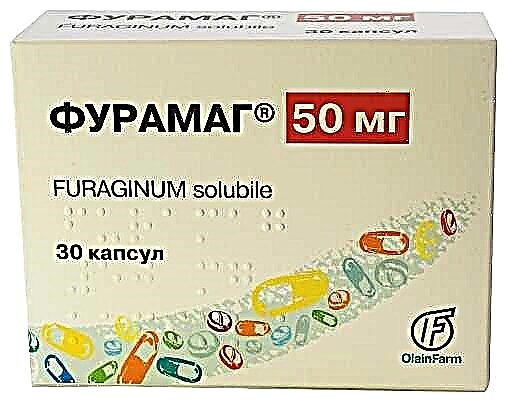
Every child has to have a blood test from time to time. Someone undergoes a routine examination, for example, at 2 years old or at 6-7 years old. Someone is worried about the symptoms of the disease, and someone is being treated and you need to find out how actively the recovery is going. Lymphocytes are among the most important for immunity and fight against diseases of blood cells. What are they responsible for in the child's body, how many such cells should be normal and what to do if their level deviates?

Role of lymphocytes
This is the name of a group of blood cells, which is one of the types of leukocytes. Such cells do not include granules, therefore, together with monocytes, they are referred to as agranulocytes. Lymphocytes are important for:
- Creation of local immunity.
- Protecting the body through the production of antibodies or the direct destruction of foreign agents.
- Control of the cells of the child's body, due to which pathological structures are destroyed.
- The formation of immunity after diseases or vaccines.
Watch a short video showing the work of lymphocytes:
Types of lymphocytes
Depending on the place of stay and function, all leukocytes are divided into:
- B cells. They are found mainly in the lymph nodes and make up about 8-20% of all lymphocytes. The main task of these cells is to provide humoral immunity. When B-lymphocytes independently contact antigens or are stimulated by T-lymphocytes, the production of antibodies begins. Memory B cells are also secreted. Having met an infectious agent, such cells record information about it, due to which post-infectious and post-vaccination immunity develops in children.
- T cells. Their main location is the thymus, and their main function is to provide cellular immunity. Such lymphocytes are the most numerous, since they constitute up to 80% of all cells of this species. They are divided into T-killers (the main "work" of such lymphocytes is the destruction of disease-causing cells), T-helpers (such lymphocytes help the T-killers and secrete active substances) and T suppressors (these cells suppress immune responses so that healthy cells are not destroyed).
- NK cells. Such lymphocytes destroy the child's own cells, which are infected or transformed into tumor cells. They occupy less than 10-20% of all lymphocytes.

Normal lymphocyte count in children
A child who has just been born does not have very many lymphocytes, because his immune system has not yet begun to work at full strength. But by the fourth or fifth day of life, the percentage of lymphocytes is compared with the level of neutrophils, after which it grows up to 4 years of age, exceeding all other leukocytes. In a 4-5 year old child, the percentage of neutrophils and lymphocytes is practically the same, and then the number of neutrophilic leukocytes becomes larger, respectively, the level of lymphocytes decreases.

A normal indicator for a child at different ages will be the following percentage of lymphocytes:
Exceeding the upper limit is called lymphocytosis, and if the level of lymphocytes does not reach the lower limit of the norm, this condition is called “lymphopenia" or "lymphocytopenia».
How are lymphocytes determined in children
First of all, the level of lymphocytes is assessed by a general blood test. In this case, the percentage of other leukocytes is also taken into account (the entire leukogram is assessed), as well as the presence of leukocytosis, increased ESR and other changes.
Also, in the form, it may be noted that atypical lymphocytes are found in the blood (they are large in size and irregular in shape).
If there is evidence, the child is sent for a more detailed examination of the immune system. Special analyzes count the number of B- and T-cells separately, determine the level of immunoglobulins, the number of activated B-lymphocytes and other indicators. Such studies help in the diagnosis of immunodeficiencies, autoimmune processes and other pathologies.

Lymphocytosis
The increased level of lymphocytes in the child's blood is due to both increased lymphocyte count (such lymphocytosis is called absolute), and low neutrophil count (this lymphocytosis is relative, since in reality the number of lymphocytes does not exceed the norm, but only looks like this due to a different redistribution of different types of white blood cells in the leukogram).
The cause of lymphocytosis in a child is:
- ARVI, influenza, measles, chickenpox, adenovirus and other viral infections.
- Toxoplasmosis and other parasitic diseases, as well as infection with protozoa.
- Tuberculosis.
- Lymphocytic leukemia and other tumors of the hematopoietic organs.
- Depletion and deficiency of vitamin B12.
- Poisoning with lead, arsenic and some other poisons.
- Autoimmune diseases.
- Hyperfunction of the thyroid gland.
- Condition after splenectomy.
- Taking antiepileptic, hormonal, antimicrobial and other drugs.

Lymphocytosis can be suspected by the symptoms of the underlying disease, for example, by an increase in body temperature, the appearance of a rash, swollen lymph nodes and other signs. If the baby has an excess of the number of lymphocytes, it is important to immediately consult a doctor.
When making a diagnosis, the pediatrician will take into account complaints, all blood test parameters, past illnesses, medication and other factors. This will allow the child with lymphocytosis to be prescribed the correct treatment, as a result of which the level of lymphocytes will gradually return to normal levels.
Lymphopenia
If in the child's body lymphocytes are produced in insufficient quantities, such lymphopenia is called absolute... In cases where a low percentage of lymphocytes is due to an increased number of neutrophils, it is diagnosed relative lymphocytopenia.

The reason for a decrease in the level of lymphocytes in a child is:
- Congenital immunodeficiency.
- Acute surgical pathology.
- HIV infection, measles, tuberculosis and some other infectious diseases.
- Inadequate nutrition or stress.
- Aplastic anemia.
- Chemotherapy or treatment with immunosuppressants.
- Systemic disease.
- Extensive burns.
- Radiation sickness.
- Thymus pathology.
- Lymph node injuries.
- Enteropathy.
- Lymphoma.
- Renal failure
Also, the number of lymphocytes is reduced during recovery from an infectious disease, when the "old" lymphocytes are destroyed, and the "new" ones have not yet entered the blood in sufficient quantities.
In the next video, Dr. Komarovsky will tell you what an increase in the level of leukocytes in a child's blood test means.
There are no specific symptoms for lymphopenia. In a child with reduced lymphocytes, lymph nodes may decrease, lesions of the oral mucosa may appear. Also, such children often have a pale or icteric color of the skin, frequent acute respiratory viral infections and an enlarged spleen.
Having discovered a deficiency of lymphocytes in a child, it is important to find out the cause of this condition as soon as possible, because such a baby's defenses are weakened and there is a high risk of infection. After additional tests and specialist consultations, the child is prescribed appropriate treatment, taking into account the cause of lymphopenia. Sometimes you have to inject immunoglobulins or bone marrow transplants.

For more information on the general blood test, see the program of Dr. Komarovsky.



